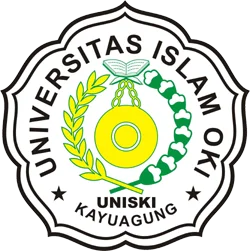The Correlation Between Classroom Seating Position and Speaking Ability of a 9th Grader
DOI:
https://doi.org/10.61994/jee.v2i1.417Keywords:
Correlation, Speaking, Classroom managementAbstract
English is regarded as an international language, one of the most widely used languages in all fields. In Indonesia, the government recognized that English proficiency had an impact on global development not only for education but also for career purposes. English is useful in a variety of fields. The limitation of the study was only focused on “The Correlation between Classroom Seating Position and Speaking Ability of 9th Grade Students of SMP Muhammadiyah 4 Palembang”. The objectives of this study were found out whether or not there is a significant correlation between Classroom Seating Position and Speaking Ability. This study used quantitative research design with correlational approach. The researchers used a purposive sampling, total of population were 172 students and the total of sample were 27 students. The data were collected by two instruments, (1) through ready-made questionnaires, (2) speaking test was analysed by using SPSS 26. The result of this study was that there was a correlation between two variables, with r-obtained (0.797) was higher than r-table (0.388). The conclusion of this study was that the alternative hypotheses (Ha) was accepted and the null hypotheses (H0) was rejected. Then there was a high correlation between the two variables.
References
AD D, Jacob, L. C. & Sorense, Chris (2010). Introduction to Research
Education. New York, NY: Wadsworth Cengage Learning.
Alotumi, M. (2021). EFL college junior and senior student’s self-regulated
motivation for improving English speaking: A survey study.
Heliyon.7(4).E06664. https://doi.org/10.1016/j.heliyon.2021.e06664
Arikunto, S. (2010). Prosedur Penelitian. (15” ed) Jakarta: Rineka Cipta Arikunto, S.
(2013). Prosedur Penelitian: Suatu Pendekatan Praktik. Jakarta:Rineka Cipta
Barkley, E. F. (2010). Student engagement techniques: A handbook for college faculty
(1st ed.). San Fransisco: Jossey-Bass.
Baron, E. B. (1992). Discipline strategies for teachers. Fastback, p. 344.
Retrieved from ERIC Database. Accessed Internet on February 2015.
Brown, D. H. (2004). Language Assessment: Principles and Classroom
Practices. New York: Pearson Education, Inc.
Brown, G., & Yule, G. (1983). Discourse Analysis. Sydney: Cambridge University
Press.
Bueno, A., Madrid, D., & McLaren, N. (2006). TEFL in Secondary Education.
Granada: Editorial Universidad de Granada
Chaney, A. L., & T. L. Burk. (1998). Teaching Oral Communication in Grades
K-8. Boston: Allyn & Bacon.
Creswel, J. W. (2015) Educational Research: Planning, Conducting, and
Evaluating Quantitative and Qualitative Research Fifth Edition. New
Jersey: Pearson Educational, Inc.
Enayat, M. J., & Derakhsan, A. (2021). Vocabulary Size and Depth as Predictors
of Second Language Speaking Ability. The system, 99.
https://doi.org/10.1016/j.system.2021.102521
Fauziati, E. (2000). English Language Teaching and Learning: Theory and
Practice. ELT Journal.
Fraenkel, J. R., Wallen, N. E., & Hyun, H. H. (2012). How to design and evaluate
research in education (8th Ed.). New York: McGraw Hill.
Harris, D. P. (1969). Testing English as a Second Language. New York
Downloads
Published
Issue
Section
License
Copyright (c) 2024 Happy Presti, Tri Rositasari Rasyid, Sri Hartati

This work is licensed under a Creative Commons Attribution-ShareAlike 4.0 International License.

Journal of English Education by https://jurnal.dokicti.org/index.php/JCSS/index
is licensed under a Creative Commons Attribution-ShareAlike 4.0 International Licensel
















